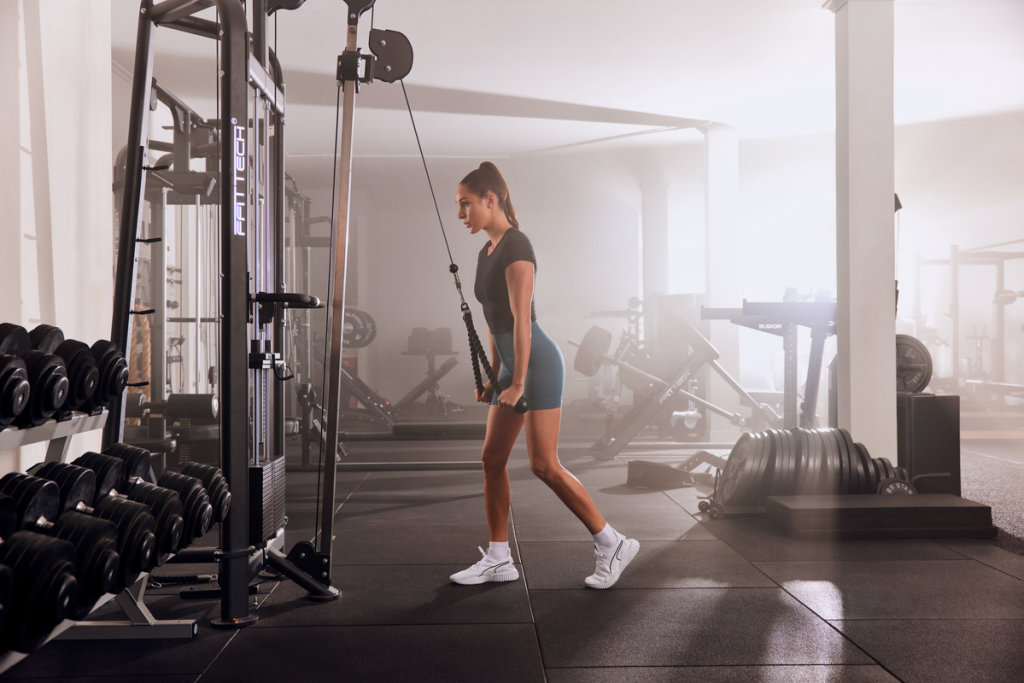Uncategorized
How to Use a Cable Machine for Targeted Strength Training
A cable machine is one of the most versatile and effective pieces of equipment in any gym. It allows you to perform a wide range of exercises targeting different muscle groups, all while providing a constant and controlled resistance. Whether you are new to strength training or looking to elevate your workouts, understanding how to use a cable machine properly can help you achieve your fitness goals efficiently and safely. This guide will walk you through the benefits, setup, and best exercises for targeted strength training with a cable machine.
Why Choose a Cable Machine for Strength Training
Cable machines offer several advantages over traditional free weights or fixed machines.
Versatility allows you to perform exercises for virtually every muscle group using various attachments and settings.
Controlled resistance provides smooth and continuous tension, reducing strain on your joints and minimizing the risk of injury.
Customizable movements help target specific areas effectively, thanks to adjustable pulleys that let you work muscles at different angles.
Improved stability and balance are achieved as many cable exercises require engaging your core for support, enhancing functional strength.
How to Set Up a Cable Machine
Proper setup is essential to maximize the effectiveness of your cable machine workouts.
Choose the right attachment based on your exercise and target muscle group. Attachments include handles, ropes, bars, and ankle straps.
Adjust the pulley height to suit the movement. Low pulleys are great for curls, while high pulleys are ideal for tricep pushdowns.
Set the resistance to a challenging but manageable level. Beginners should start with lighter weights and gradually increase the load.
Ensure a stable stance by keeping your feet shoulder-width apart and your core engaged for balance.
Top Cable Machine Exercises for Targeted Strength Training
Here are some of the best exercises you can perform on a cable machine, organized by muscle group.
Upper Body Exercises
For the chest, try the cable chest fly. Attach D-handles to both high pulleys and stand in the center with one handle in each hand. Slowly bring your hands together in a wide arc until they meet in front of your chest, then return to the starting position. Keep a slight bend in your elbows throughout the movement.
For the back, perform single-arm cable rows. Attach a single handle to a low pulley and sit on a bench or stand with the handle in one hand. Pull the handle toward your torso, keeping your elbow close to your body, and slowly return to the start. Focus on squeezing your shoulder blades together at the top.
For the shoulders, use the cable lateral raise. Attach a single handle to a low pulley and stand sideways to the machine. Raise your arm out to the side until it is parallel to the ground, then lower it back down with control. Avoid using momentum to lift the weight.
For the triceps, perform tricep pushdowns. Attach a straight bar or rope to a high pulley and stand facing the machine. Push the bar down until your arms are fully extended, then slowly return to the starting position. Keep your elbows close to your sides for proper form.
For the biceps, try the cable bicep curl. Attach a straight bar to a low pulley and stand facing the machine. Curl the bar toward your chest, keeping your elbows stationary, then slowly lower it. Focus on contracting your biceps throughout.

Lower Body Exercises
Cable squats target the quads, hamstrings, and glutes. Attach a straight bar to a low pulley and hold it at shoulder height. Perform a squat by bending your knees and lowering your hips, keeping your chest upright. Push through your heels to return to the start.
Cable kickbacks are great for the glutes and hamstrings. Attach an ankle strap to a low pulley, strap it around your ankle, and stand facing the machine. Extend your leg backward in a controlled motion, squeezing your glutes at the top. Return to the start with control.
For inner thighs, perform cable adductions. Attach an ankle strap to a low pulley and stand sideways to the machine with the strapped leg closest to it. Pull your leg across your body, keeping it straight, then return to the start.
Core Exercises
The cable woodchopper is ideal for the obliques and core. Attach a handle to a high pulley and stand sideways to the machine. Pull the handle diagonally across your body, from high to low, while rotating your torso. Return to the start using controlled movements.
The cable crunch targets the abs effectively. Attach a rope to a high pulley and kneel facing the machine. Hold the rope with both hands by your head and crunch forward, bringing your elbows toward your knees. Slowly return to the start while focusing on contracting your abs.

Safety Tips for Using a Cable Machine
Always warm up for 5 to 10 minutes to prepare your muscles for exercise.
Focus on proper form to ensure you are working the intended muscles and avoiding injury.
Start with lighter weights to master each movement before increasing the resistance.
Use a mirror, if available, to check your form and alignment during exercises.
Balance your workouts by performing exercises on both sides of your body to prevent imbalances.
Conclusion
A cable machine is a powerful tool for targeted strength training, offering versatility, controlled resistance, and the ability to work muscles from various angles. By setting up the machine correctly, selecting the right exercises, and focusing on proper form, you can achieve a balanced and effective workout. Incorporate these exercises into your routine and enjoy the benefits of a stronger, healthier body.


